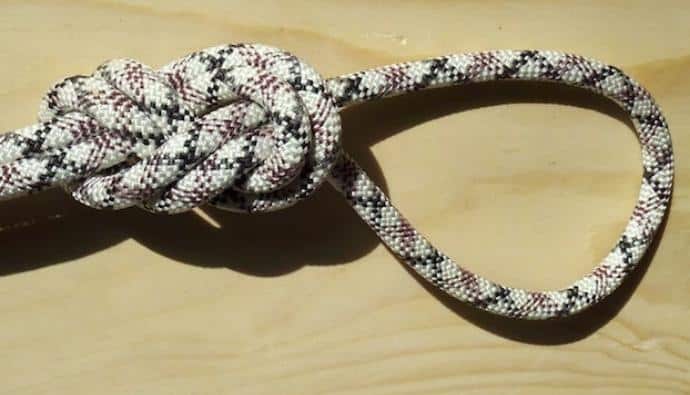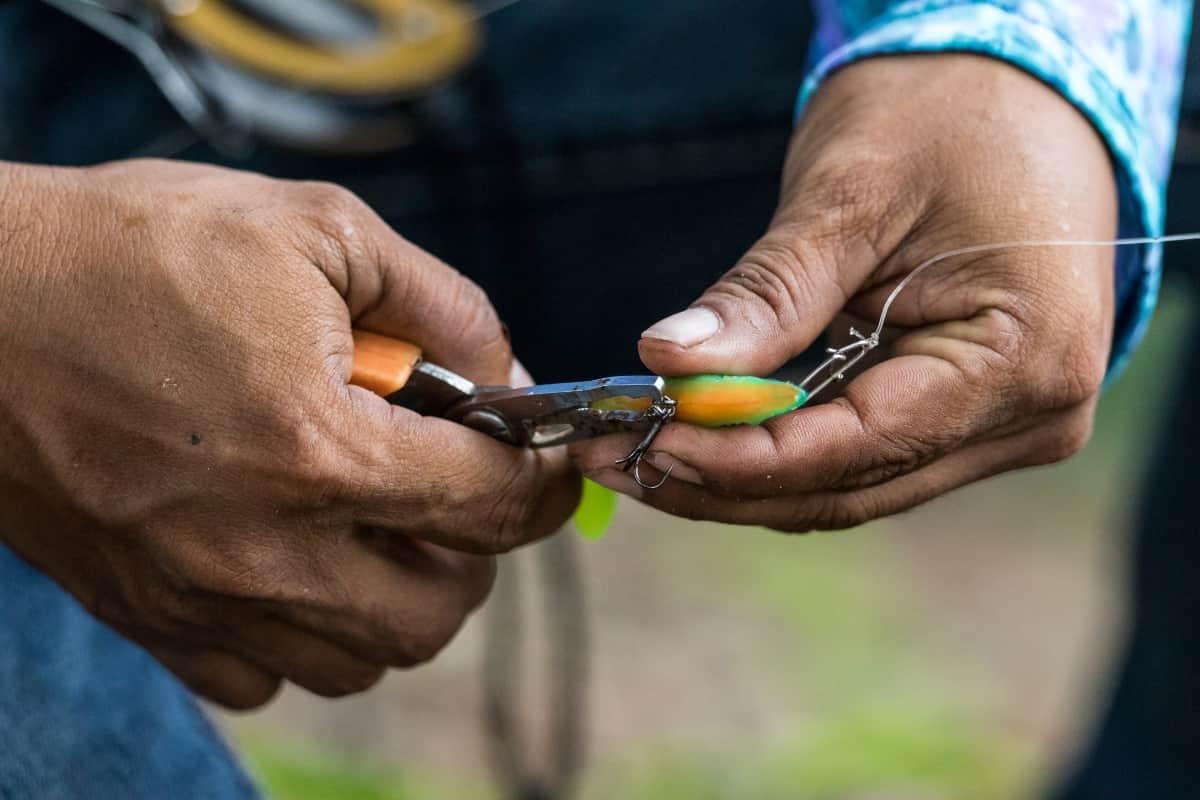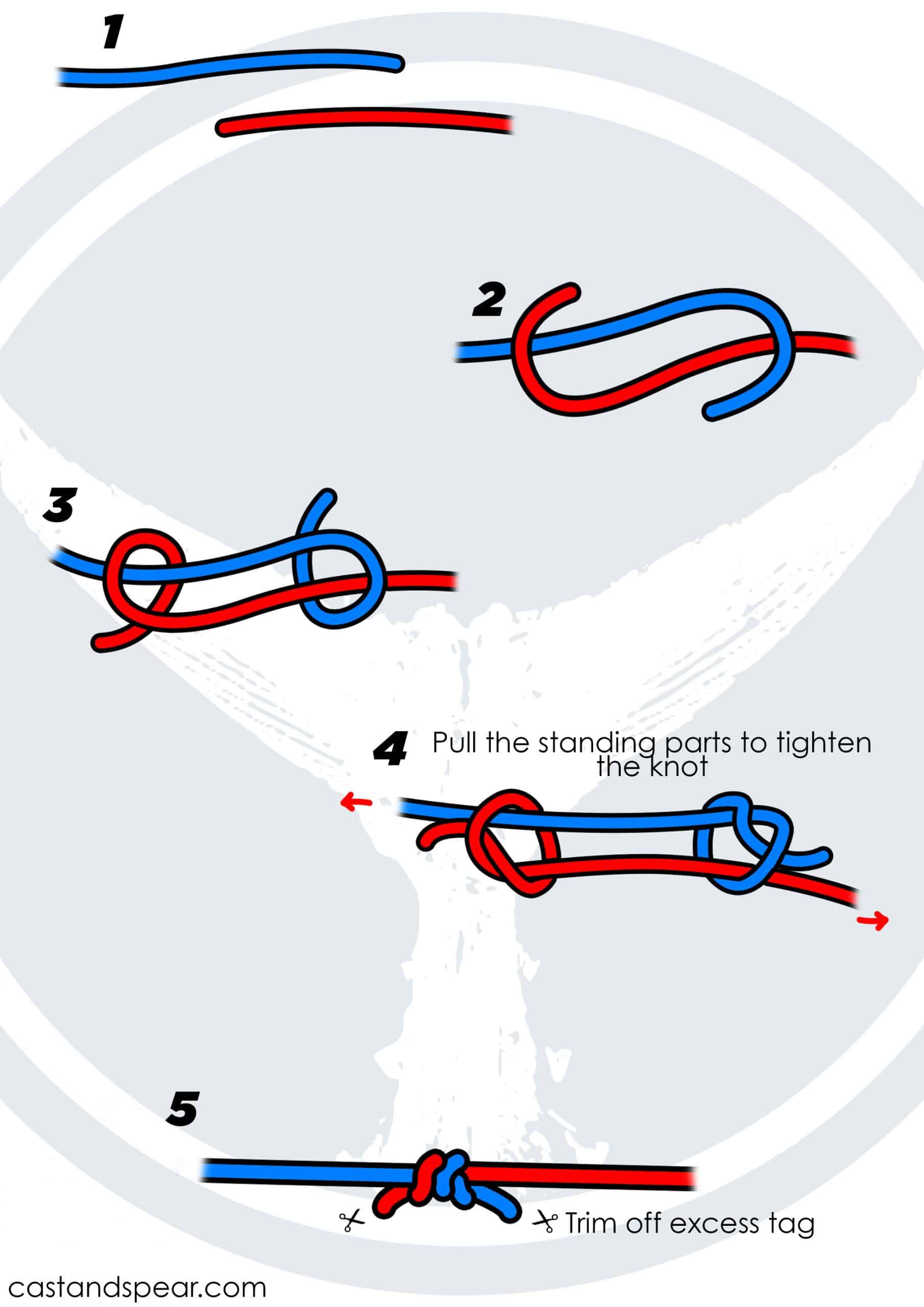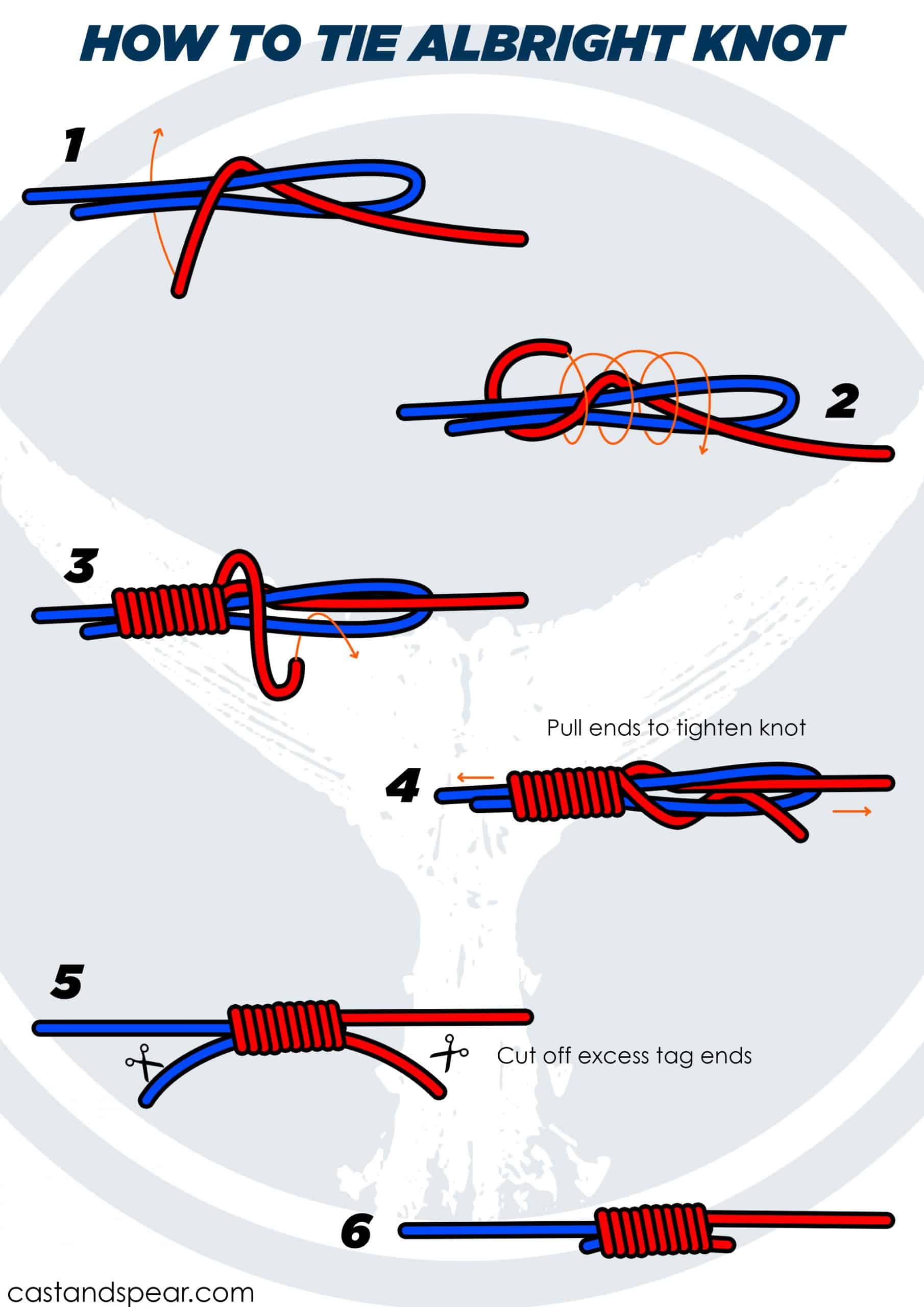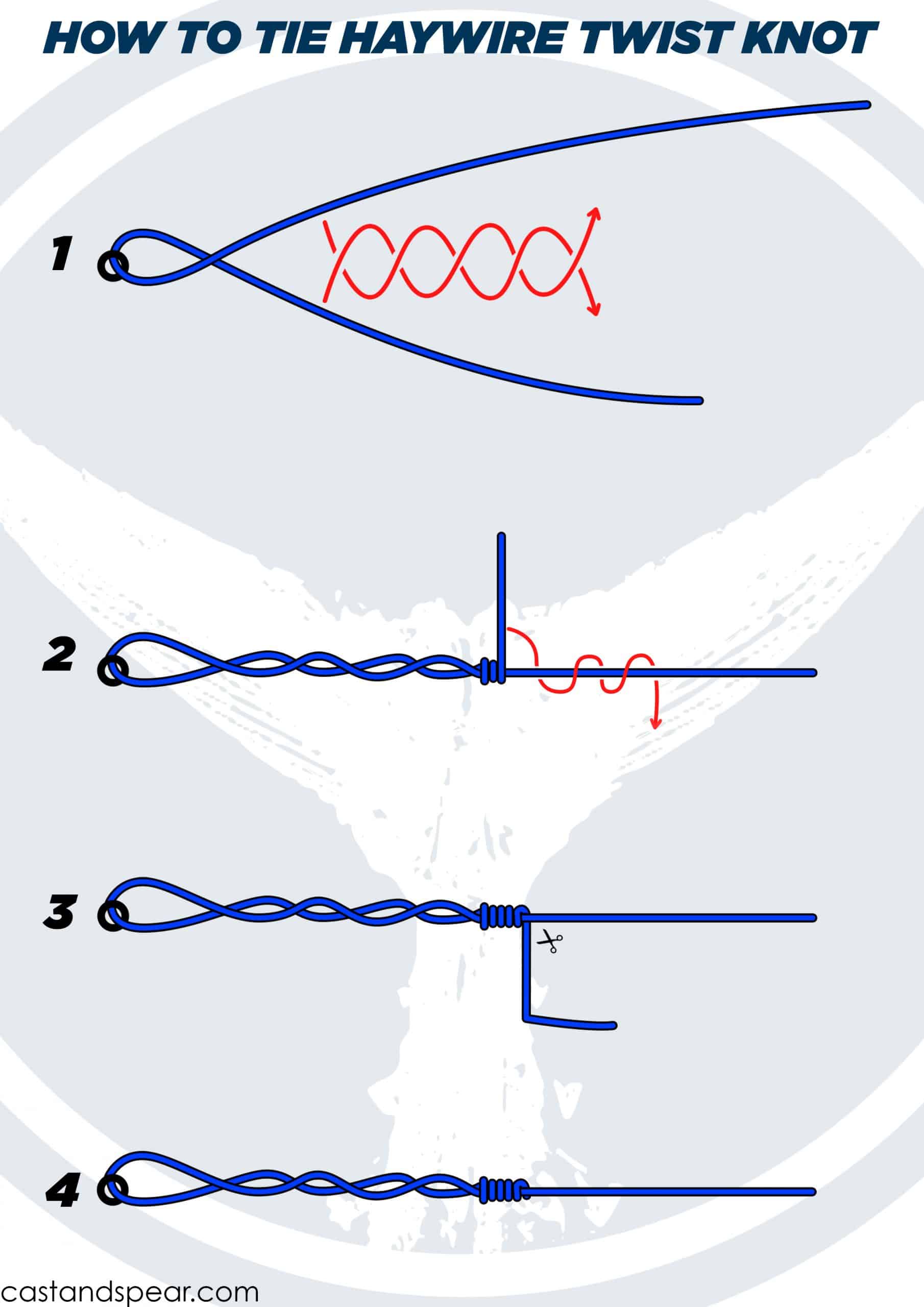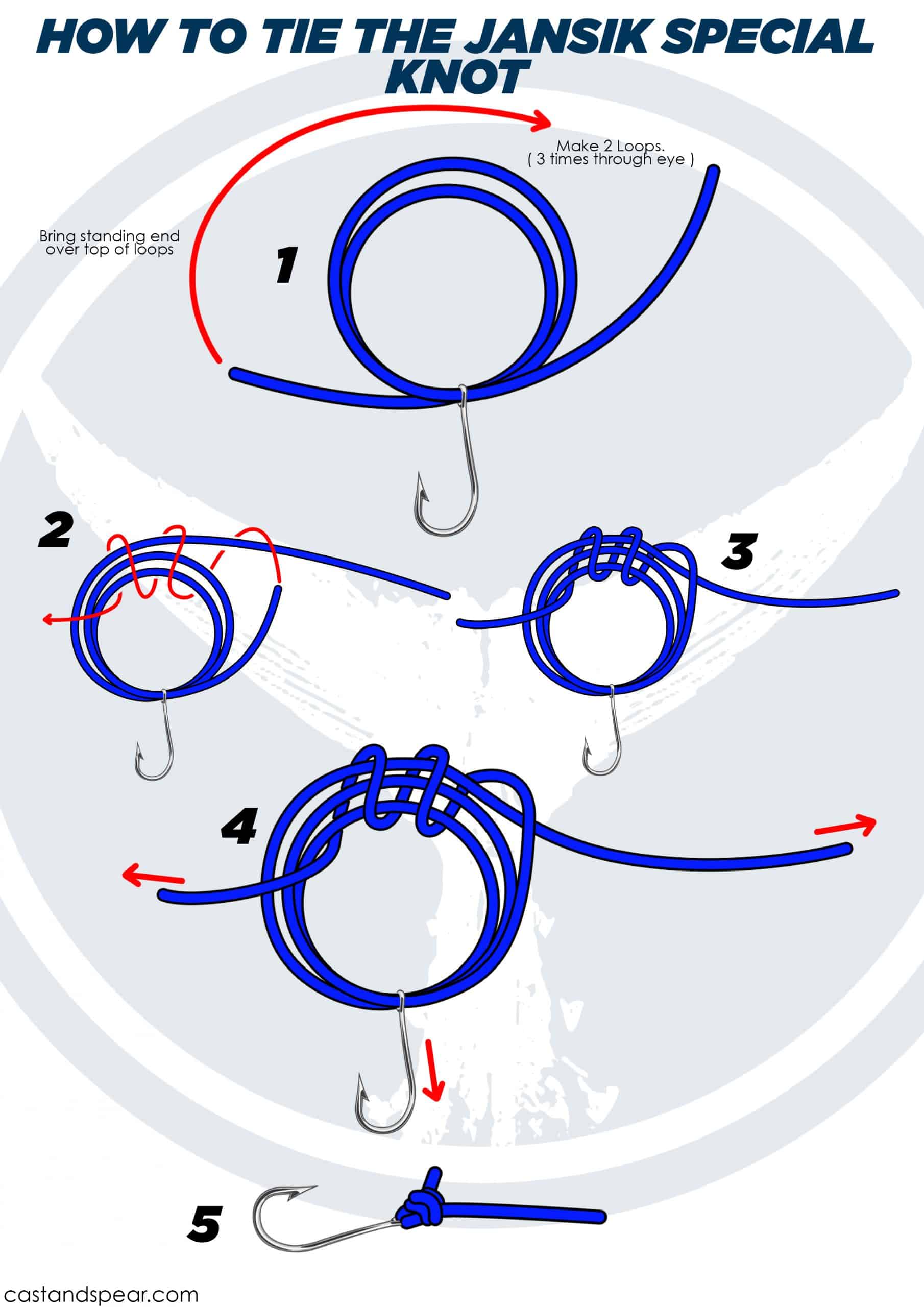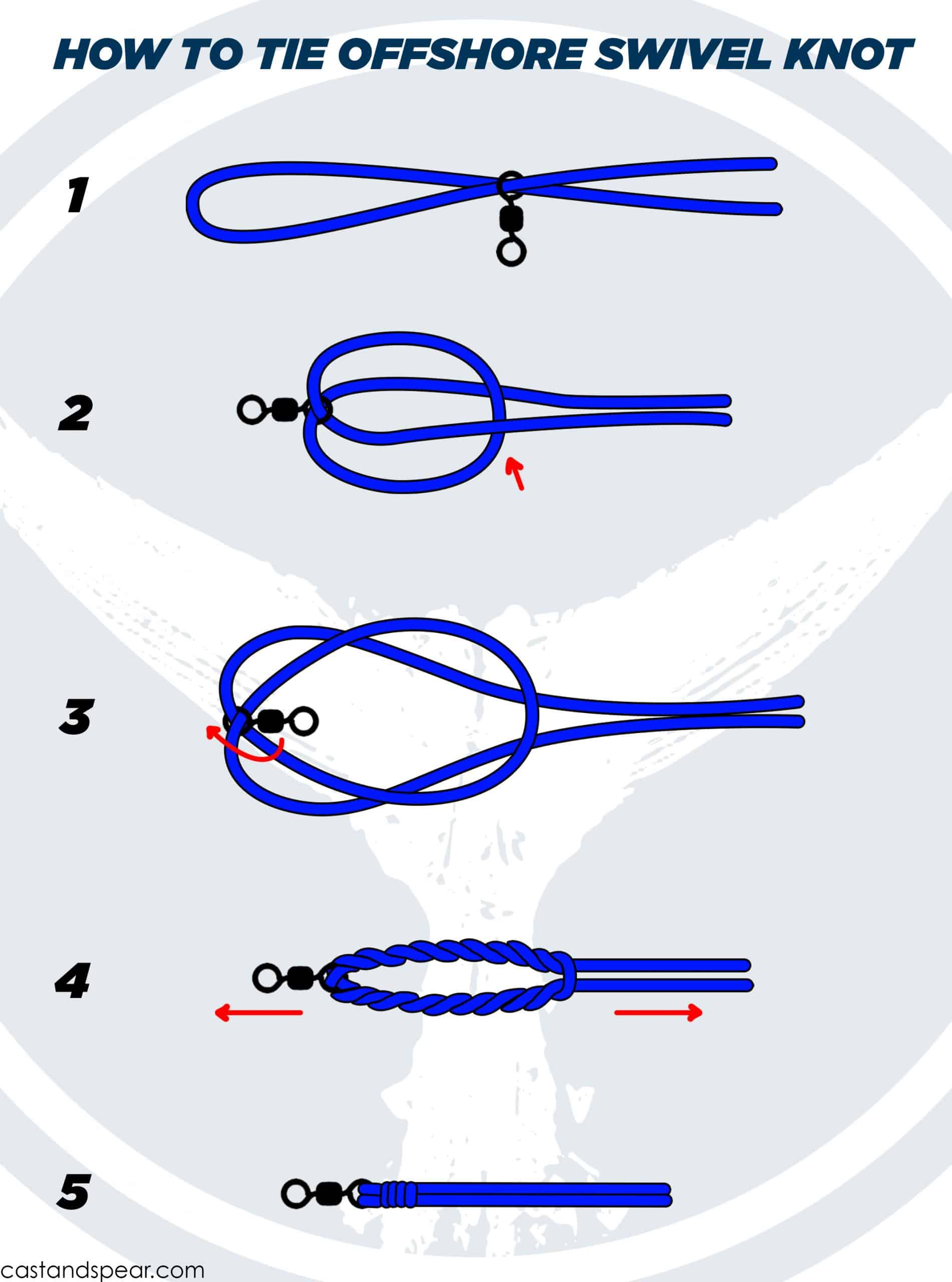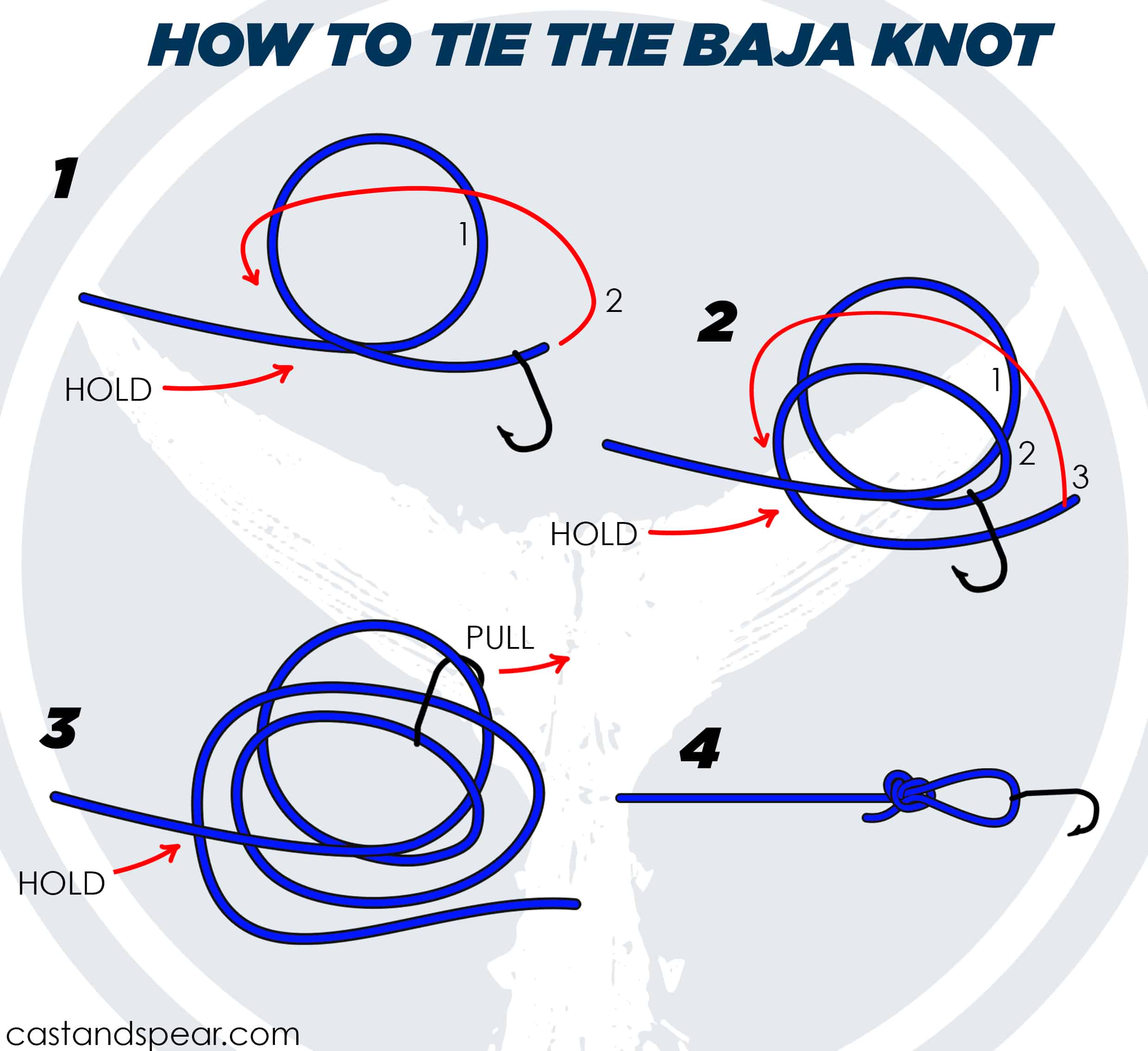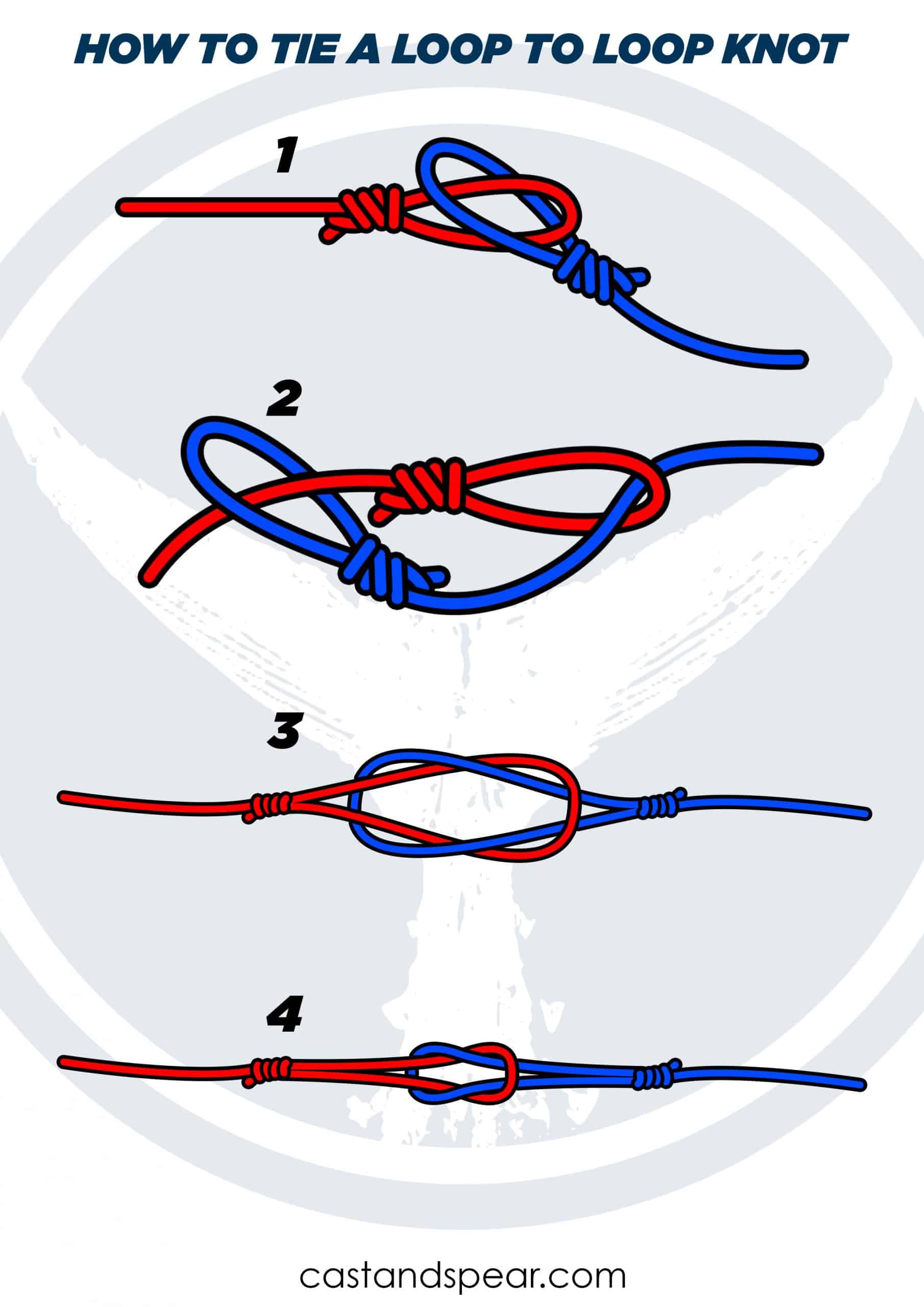The blood knot is a traditional fishing knot for tying two fishing lines together. The preferred knot for fly fishing, it works well with lines that are of the same diameter or which are almost the same size.
The reason this knot got its name might be because it was tied at the ends of whips to draw blood from a person as punishment. The main draw of these knots is that it has a breaking strength of about 85%.
Blood Knot Tying Instructions
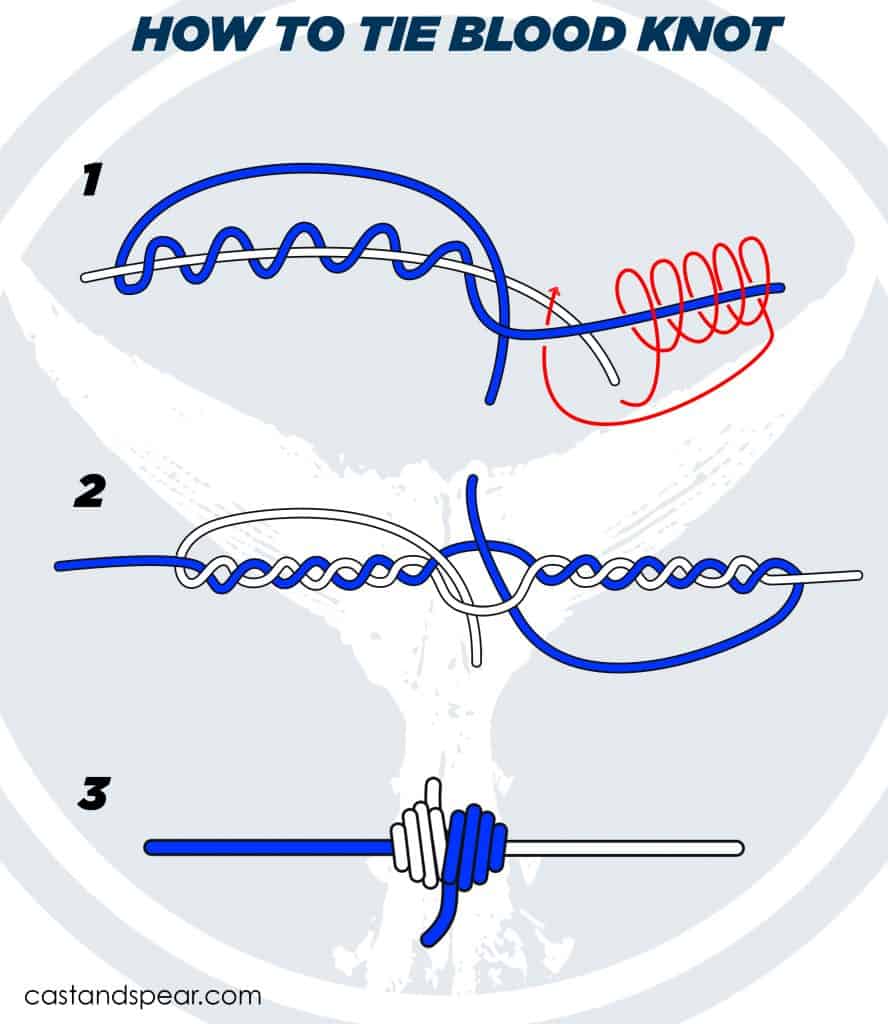
- Take five inches each of the leader and mainline and overlap them even if they don’t have the same diameter. Pinch the point where they overlap.
- Make seven wraps with the tag end of the main fishing line over and around the leader line making sure that you keep moving down the latter.
- Place the tag end of the mainline through the V that appears at the point where the lines overlap.
- Pinch this new overlap point using the hand you made the wraps.
- Repeat the last two steps by using the tag end of the leader line to make seven more wraps from the around the main one making sure that they move up it.
- Place the tag end of the V at the overlap point.
- Moisten the knot with water or saliva and pull both lines in the opposite direction to tighten them. Make it tight so the tag ends stick up. The result should be two short sections of the barrel, which will look like a hangman’s knot.
- Once the blood knot coils tightly together, cut the tag ends of both lines to close it.
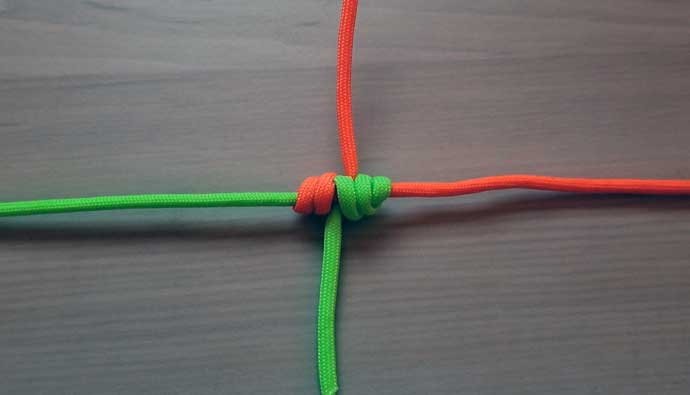

Uses
- A famous knot in for fly fishing.
- You can make a decorative stopper in sailing.
- Use it to tie a leader to a tippet or a line to a leader.
- You can be used to make fishing leaders.
Tips
- Make sure that the tag ends are at 90-degree angles to the line.
- Leave one of the ends intact to attach a dropper such as a fly.
Advantages
- The blood knot is compact, which makes it invaluable for fly fishing.
- It is versatile enough to have several uses.
- The chances of this fishing knot breaking are quite slim as it retains most of the strength of the line.
- It’s one of the very few fishing knots that tie two lines that have different diameters.
- The knot can be used for tying braid to braid, mono to mono line, and a braid to a fluoro. The material doesn’t matter as such.
- Use it to strengthen a rope.
Disadvantages
- The blood knot is notoriously difficult to tie and unravel.
- If tag ends are left, the blood knot can catch on guides.
Alternatives
- Uni-to-Uni Knot – Another great knot for joining two lines together.
- Improved Blood Knots – Use this blood knot to connect a thin and thick line for fly fishing irrespective of the material.
Frequently Asked Questions
Q: Why is it called a blood knot?
A: The Blood Knot is called a blood knot because it was allegedly tied to the business end of whips to draw blood from torture victims.
Q: How do I tighten this knot?
A: Make sure that you moisten the knot when you are tightening the tag ends. This will make the knot more robust while fishing.
×
How can we improve it?




 Facebook
Facebook YouTube
YouTube